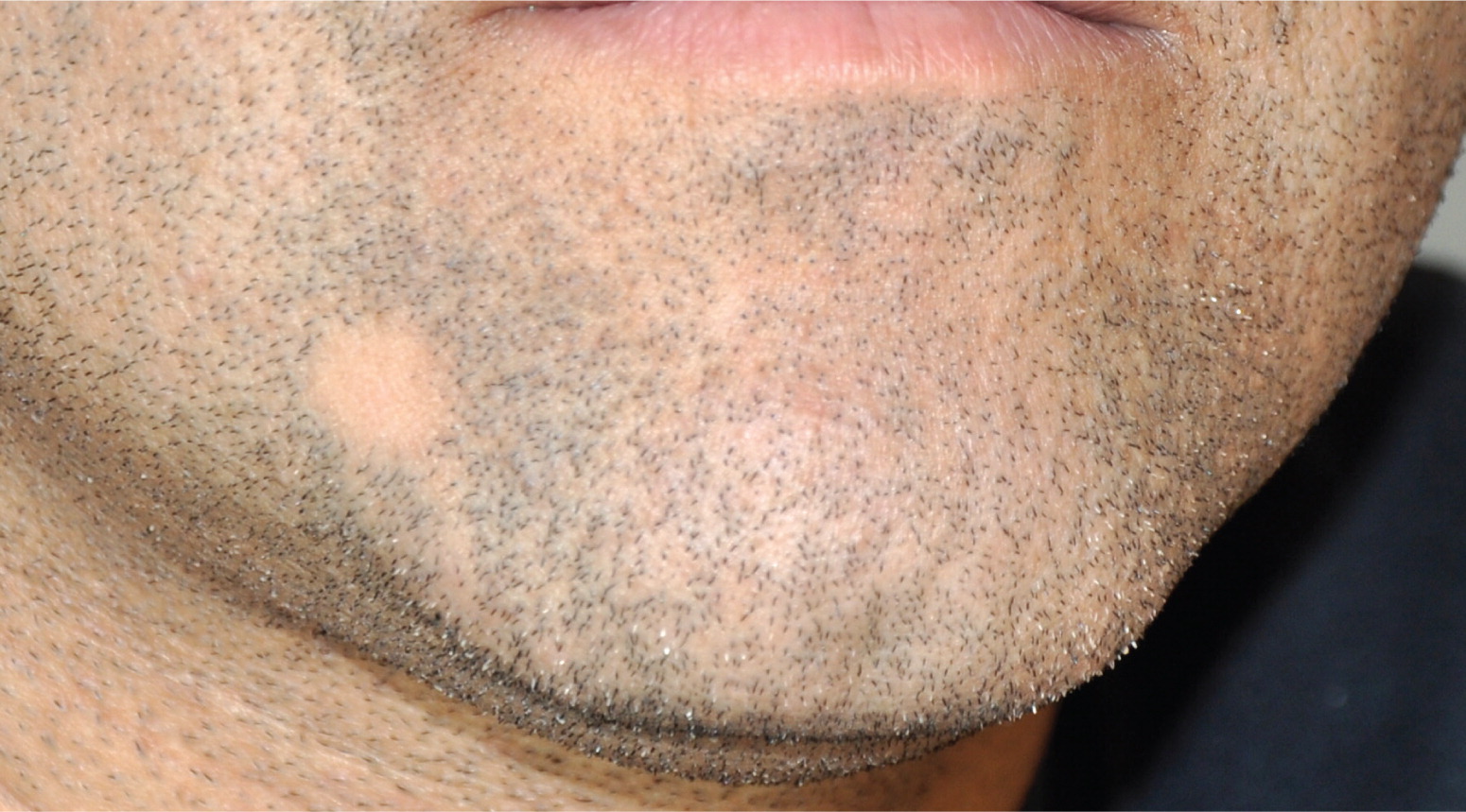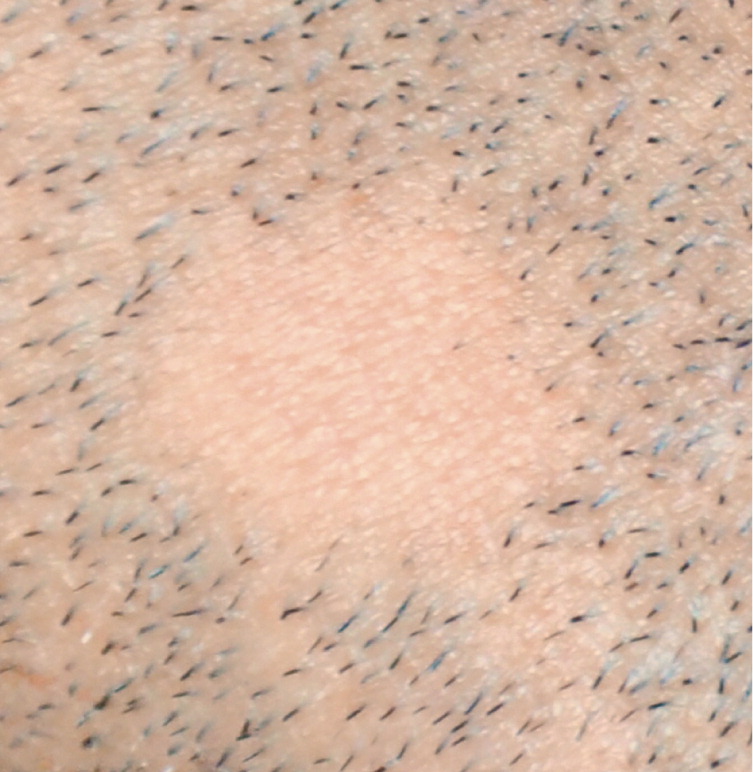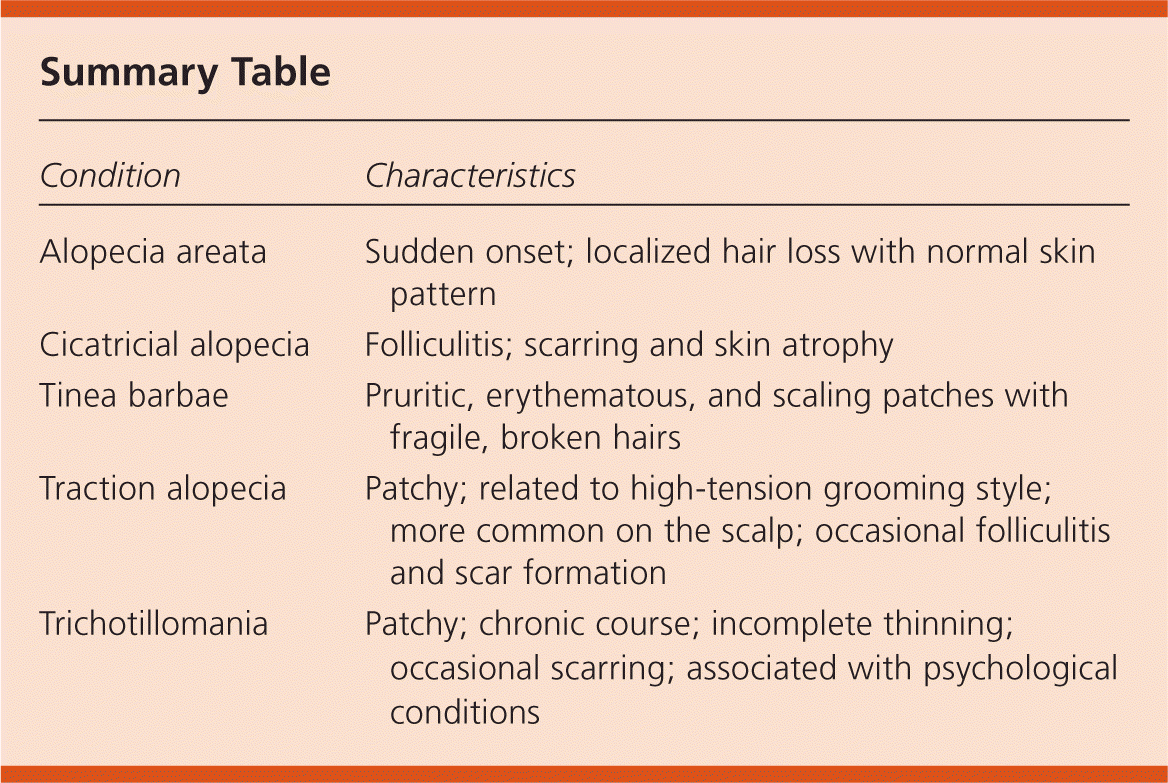
Am Fam Physician. 2014;89(7):583-584
Author disclosure: No relevant financial affiliations.
A 44-year-old man presented with a focal patch of hair loss in his beard that had been present for about two months. It was not itchy or painful. His history findings were unremarkable.


Question
Discussion
The answer is A: alopecia areata. This T cell–mediated autoimmune disease has a lifetime prevalence of about 2%.1 It is characterized by a localized area of complete hair loss with normal skin pattern. Alopecia areata has a sudden onset and may involve the entire scalp (alopecia totalis) or the entire body (alopecia universalis).2 Alopecia areata increases the risk of other autoimmune disorders.3
The diagnosis is usually made clinically; however, a skin biopsy may be performed if the diagnosis is unclear.1,4,5 Spontaneous remission is common and usually occurs within six to 12 months.1,2 Topical, intralesional injection and, occasionally, systemic glucocorticoids are used for treatment.1,2,5 Immunomodulating agents (e.g., irritant dithranol, diphenylcyclopropenone) and topical minoxidil have been used with variable results.1,4,5

| Condition | Characteristics |
|---|---|
| Alopecia areata | Sudden onset; localized hair loss with normal skin pattern |
| Cicatricial alopecia | Folliculitis; scarring and skin atrophy |
| Tinea barbae | Pruritic, erythematous, and scaling patches with fragile, broken hairs |
| Traction alopecia | Patchy; related to high-tension grooming style; more common on the scalp; occasional folliculitis and scar formation |
| Trichotillomania | Patchy; chronic course; incomplete thinning; occasional scarring; associated with psychological conditions |
